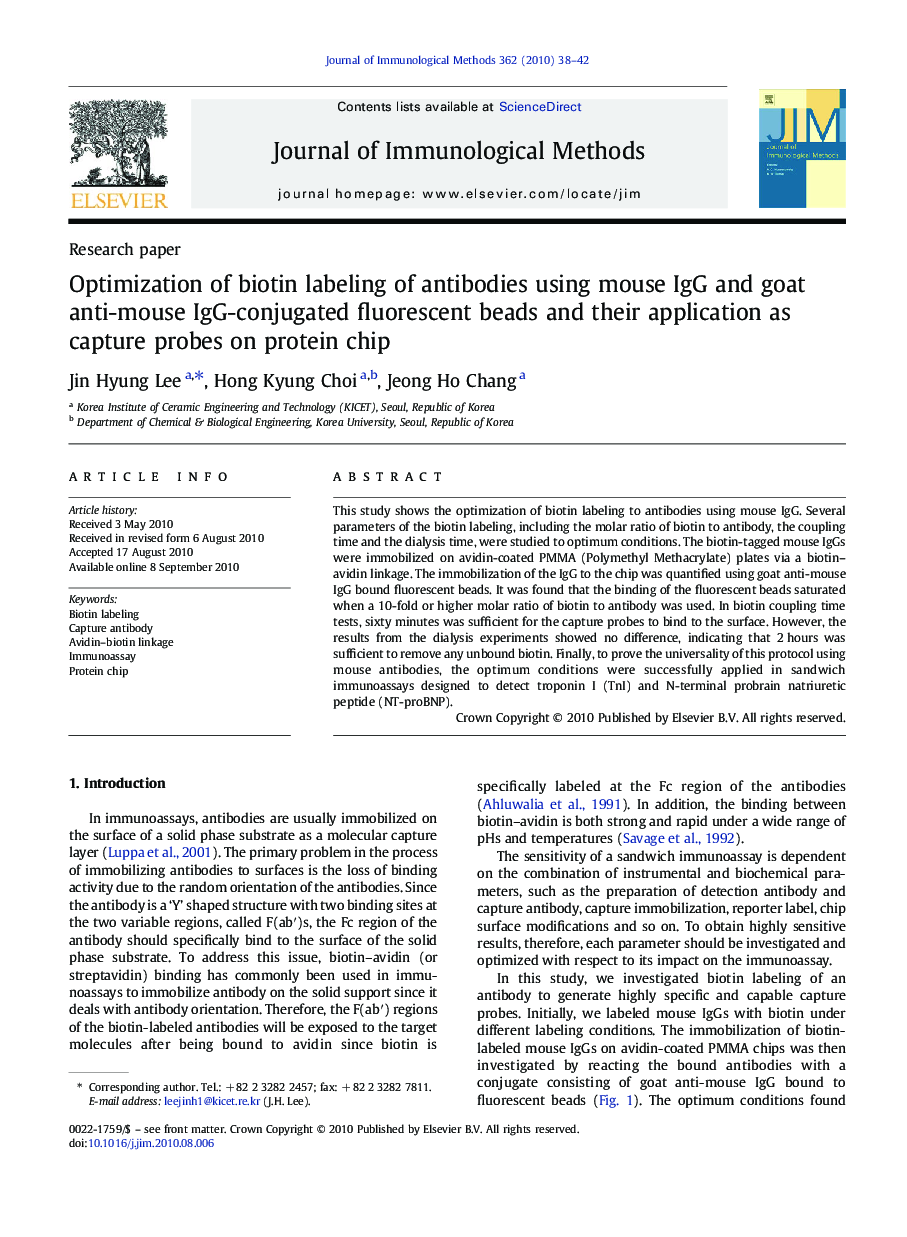| Article ID | Journal | Published Year | Pages | File Type |
|---|---|---|---|---|
| 8419665 | Journal of Immunological Methods | 2010 | 5 Pages |
Abstract
This study shows the optimization of biotin labeling to antibodies using mouse IgG. Several parameters of the biotin labeling, including the molar ratio of biotin to antibody, the coupling time and the dialysis time, were studied to optimum conditions. The biotin-tagged mouse IgGs were immobilized on avidin-coated PMMA (Polymethyl Methacrylate) plates via a biotin-avidin linkage. The immobilization of the IgG to the chip was quantified using goat anti-mouse IgG bound fluorescent beads. It was found that the binding of the fluorescent beads saturated when a 10-fold or higher molar ratio of biotin to antibody was used. In biotin coupling time tests, sixty minutes was sufficient for the capture probes to bind to the surface. However, the results from the dialysis experiments showed no difference, indicating that 2Â hours was sufficient to remove any unbound biotin. Finally, to prove the universality of this protocol using mouse antibodies, the optimum conditions were successfully applied in sandwich immunoassays designed to detect troponin I (TnI) and N-terminal probrain natriuretic peptide (NT-proBNP).
Related Topics
Life Sciences
Biochemistry, Genetics and Molecular Biology
Biotechnology
Authors
Jin Hyung Lee, Hong Kyung Choi, Jeong Ho Chang,
